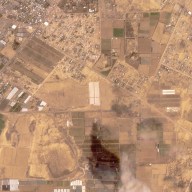Getting your car washed is good. But unfortunately it’s not an all-encompassing good.
Water is compromised. Energy is consumed. Chemicals are unleashed. Oily and metal contaminants can end up where they shouldn’t. And if someone forgets to close all the car windows before the water starts, there’s all that cussing.
We can never stop open-window dementia, but we can help the planet wince just a bit less, by understanding which are the greener car wash options.
First off, washing vehicles in your driveway may sound green but it’s not. In many cities it’s even illegal to wash your car with soap, and/or wash a very filthy vehicle. The concern is that your run-off is going to end up — untreated — in a city’s storm drain system. Calgary and Toronto have the stiffest fines for washing vehicles in driveways, and its no coincidence they both rely on nearby water bodies for their drinking water (Elbow and Bow Rivers, and Lake of Ontario, respectively).
For that reason both cities heartily recommend that citizens frequent professional car washing establishments for their clean car fixes.
According to Jorge de Mendonca, of the Canadian Carwash Association, commercial washes have holding tanks designed to contain the worst of the run-off. When full, these tanks are pumped out by appropriately licensed carriers. The semi-treated water is then directed to a municipality’s sanitary water system, which includes that crucial stop at a treatment plant.
If you’re hell bent on washing your car at home, do it without soap, and/or do it on your lawn, which means no run-off to the storm drain and your grass gets a bit of a drink.
Commercial car washes also tend to use less water than home washes. Self-serve car washes use the least — about 57 litres per wash. In-bay automatic washes, where the car remains stationary, use about 190 to 228 litres. Automatic conveyer touch washes use about 250 litres, while automatic conveyor touches systems use about 324 litres. Don’t forget that some operations also recycle some water, but they’re in the minority.
There is a new North American-wide initiative afoot, called Watersavers, which will certify and promote car wash operations that are on the cutting edge of cutting water usage.
“The target is about 40 gallons (150 litres) per wash,” says Mendonca. He adds that 40 gallons is about how much water is used in a typical (human) bath.
Now if we could just combine the two — car washing and people washing in one go — then we’d really be getting somewhere.
















